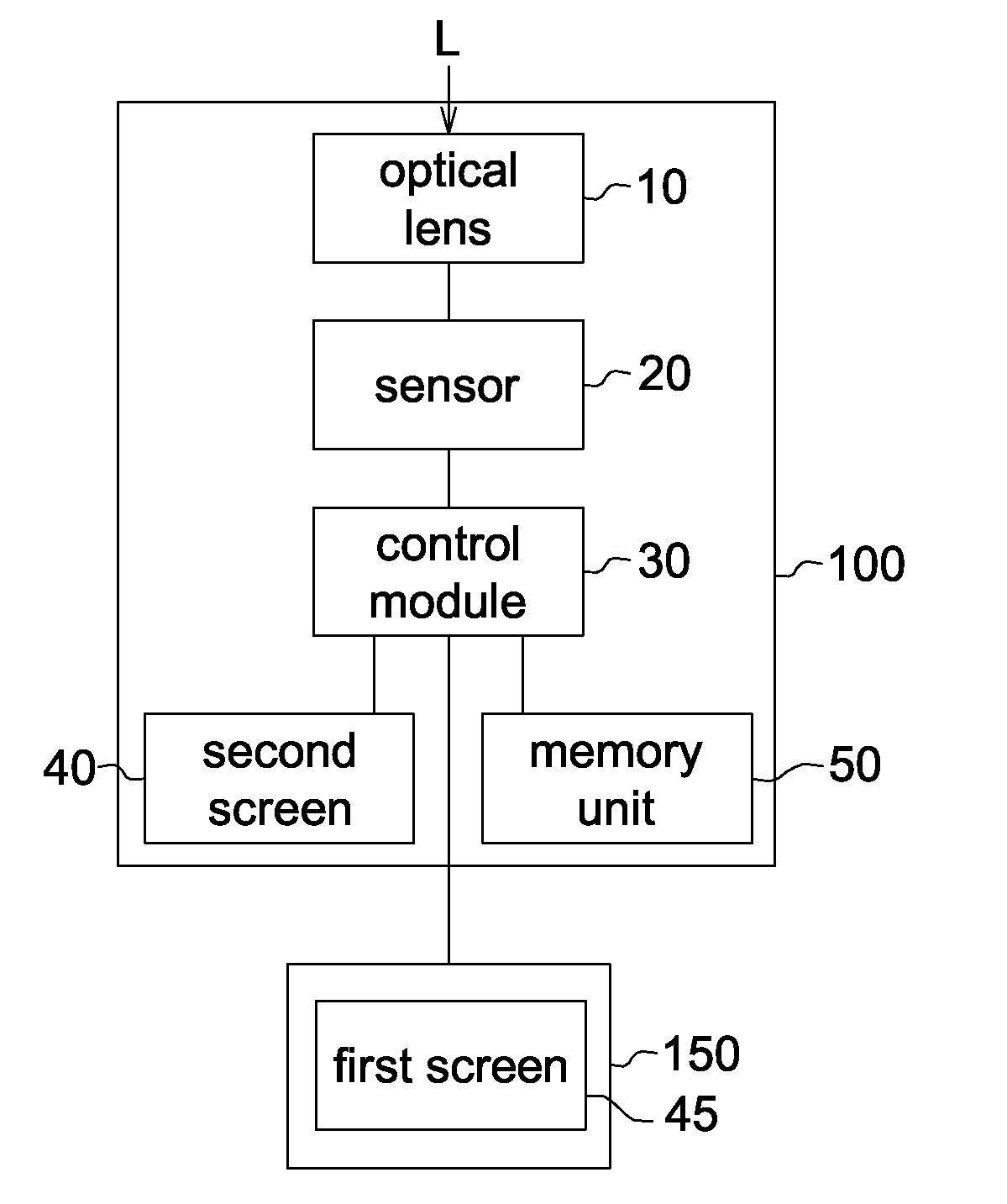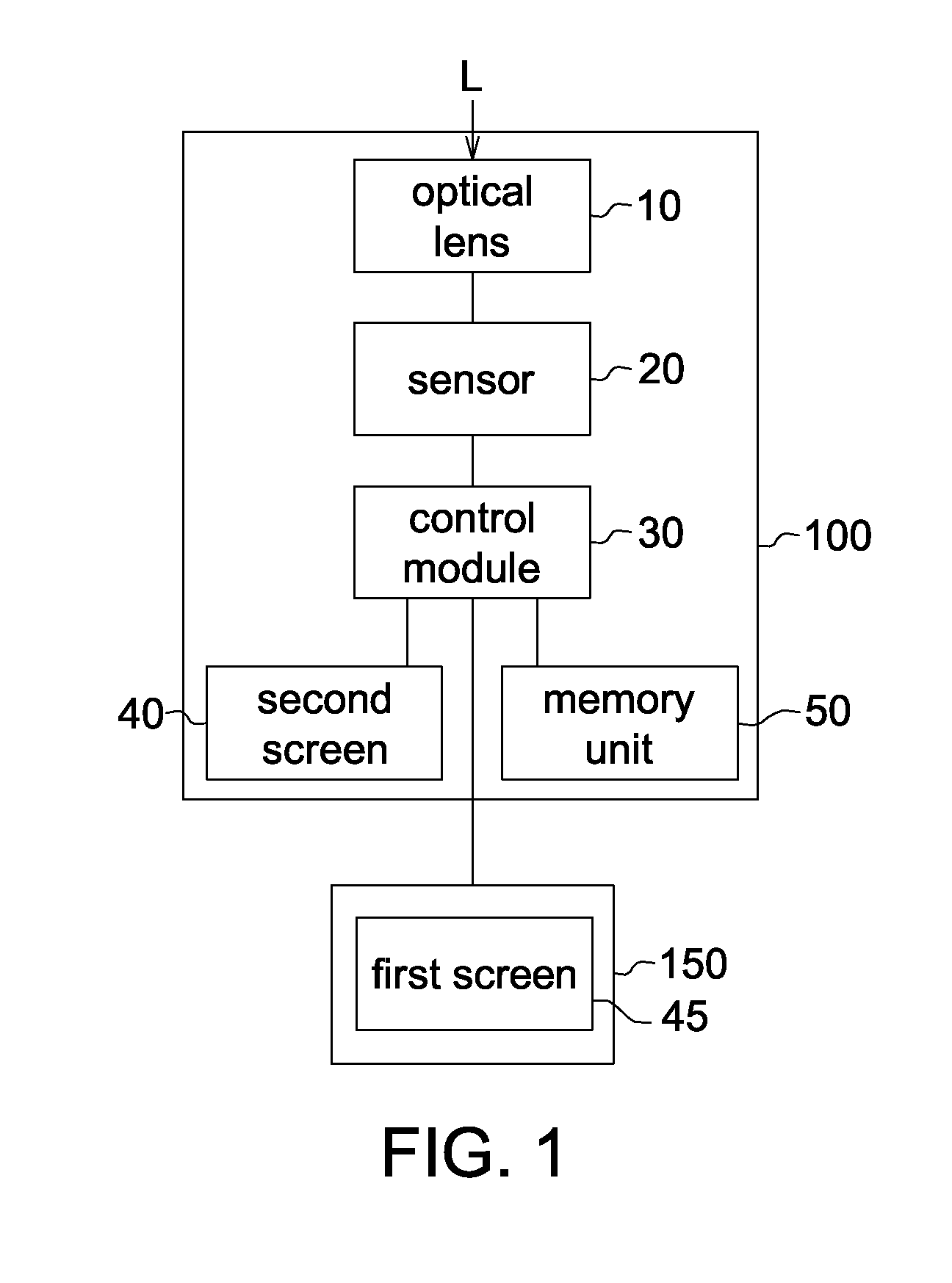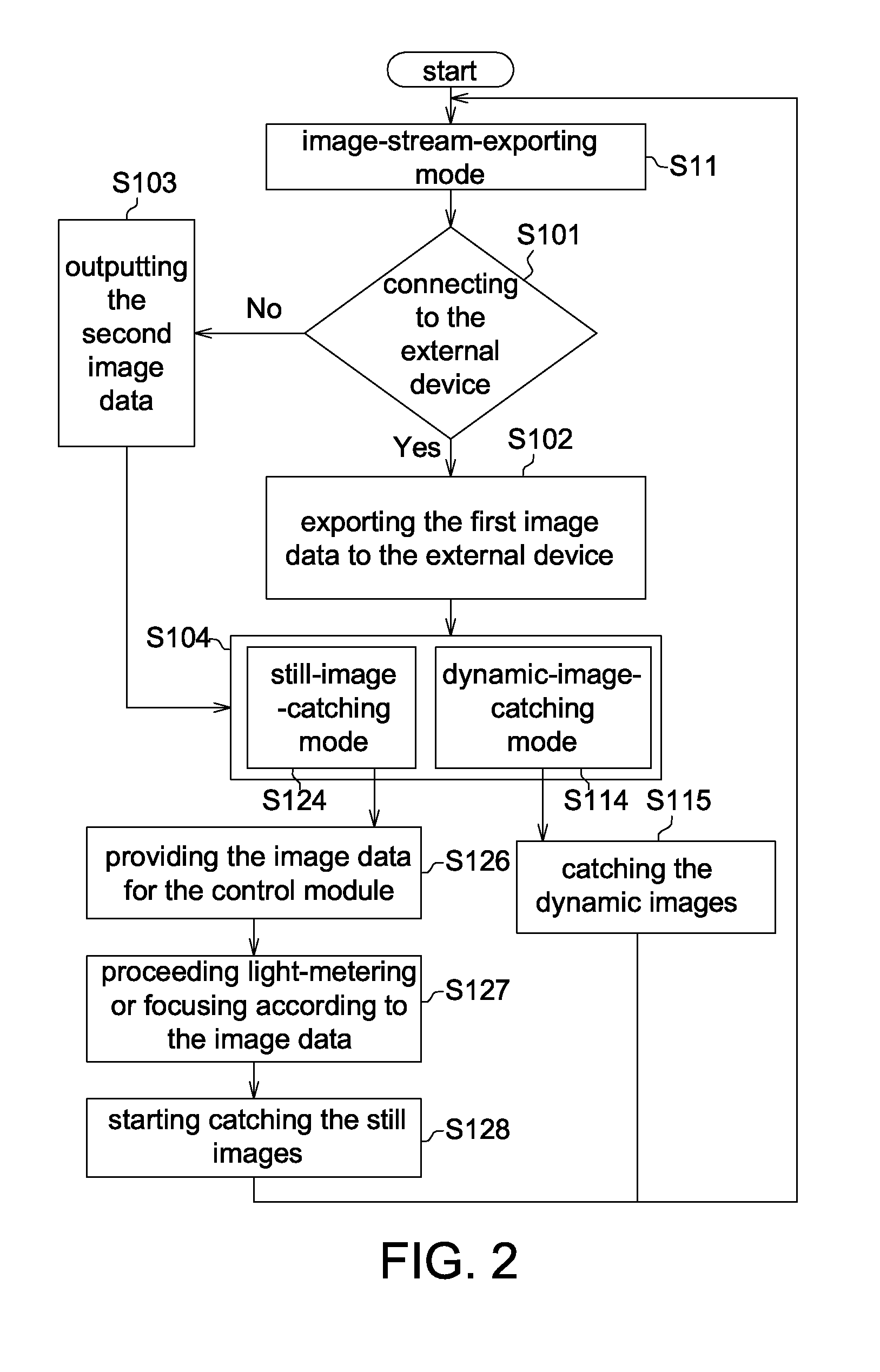Image-catching device and method for catching image and exporting image stream
- Summary
- Abstract
- Description
- Claims
- Application Information
AI Technical Summary
Benefits of technology
Problems solved by technology
Method used
Image
Examples
Embodiment Construction
[0016]FIG. 1 illustrates an image-catching device according to one embodiment of the disclosure. The image-catching device includes a lens 10, a sensor 20 and a control module 30. Beams L from a target object are converged by the lens 10 for forming an image on the sensor 20. The sensor 20 senses the beams L and converts the beams L to a first image data or a second image data. The control module 30 asks the sensor to export the first image data or output the second image data, and then reads and computes the first image data or the second image data. The sensor 20 could be a Charge Coupled Device (CCD) or a Complementary Metal-Oxide Semiconductor (CMOS). The control module 30 could be an Application-Specific Integrated Circuit (ASIC), a Central Processing Unit (CPU) or a Digital Signal Processing (DSP).
[0017]In one embodiment, the sensor 20 could export the first image data to an external device 150 directly when the image-catching device 100 and the external device 150 are connect...
PUM
 Login to View More
Login to View More Abstract
Description
Claims
Application Information
 Login to View More
Login to View More - R&D
- Intellectual Property
- Life Sciences
- Materials
- Tech Scout
- Unparalleled Data Quality
- Higher Quality Content
- 60% Fewer Hallucinations
Browse by: Latest US Patents, China's latest patents, Technical Efficacy Thesaurus, Application Domain, Technology Topic, Popular Technical Reports.
© 2025 PatSnap. All rights reserved.Legal|Privacy policy|Modern Slavery Act Transparency Statement|Sitemap|About US| Contact US: help@patsnap.com



